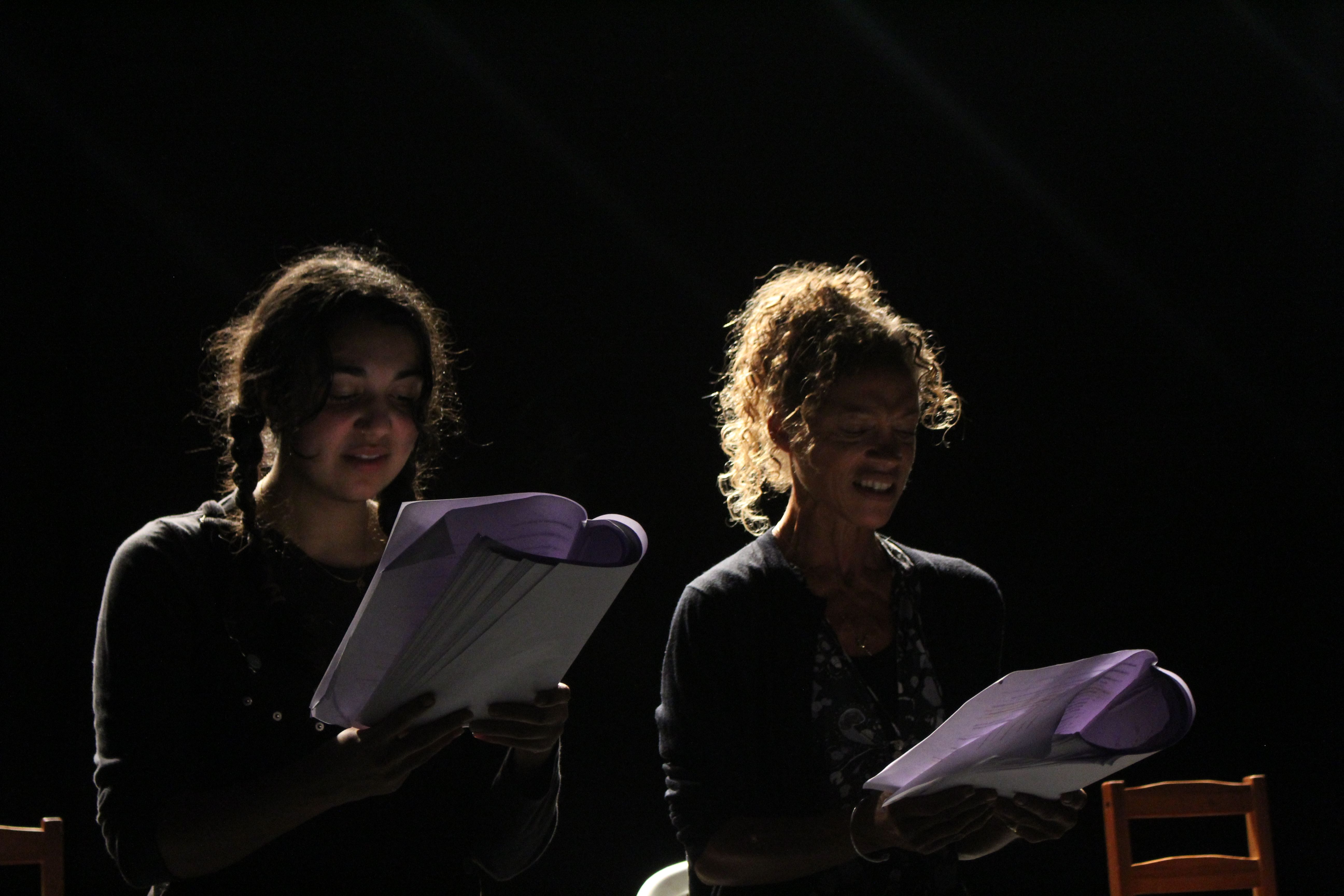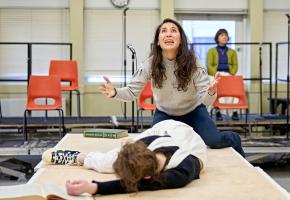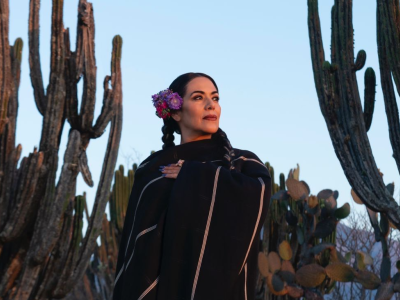With a variety of languages, backgrounds and cultural traditions, some of these works emerged from projects run by the Royal Court in collaboration with partners around the world. In Mexico, it featured the support of UNAM, the largest National Autonomous University in Mexico founded in 1551. UNAM has up to 300,000 students and its objective is to train professionals, largely in the humanities, to carry out research, analyse problems in society and extend the barriers of culture. For this series, the Royal Court worked with the Anglo Arts & Culture that facilitates cultural exchanges between Mexico and the UK and the Cátedra Bergman, that aims to encourage experimental practices, film cycles, theatrical seasons and much more.
Working with this rich array, some of these remarkable writers have produced challenging and interesting works, including two Mexican plays, “Field Studies” by Sara Pinedo and “A Migrant Ball of Thread”. I will be reviewing the latter.
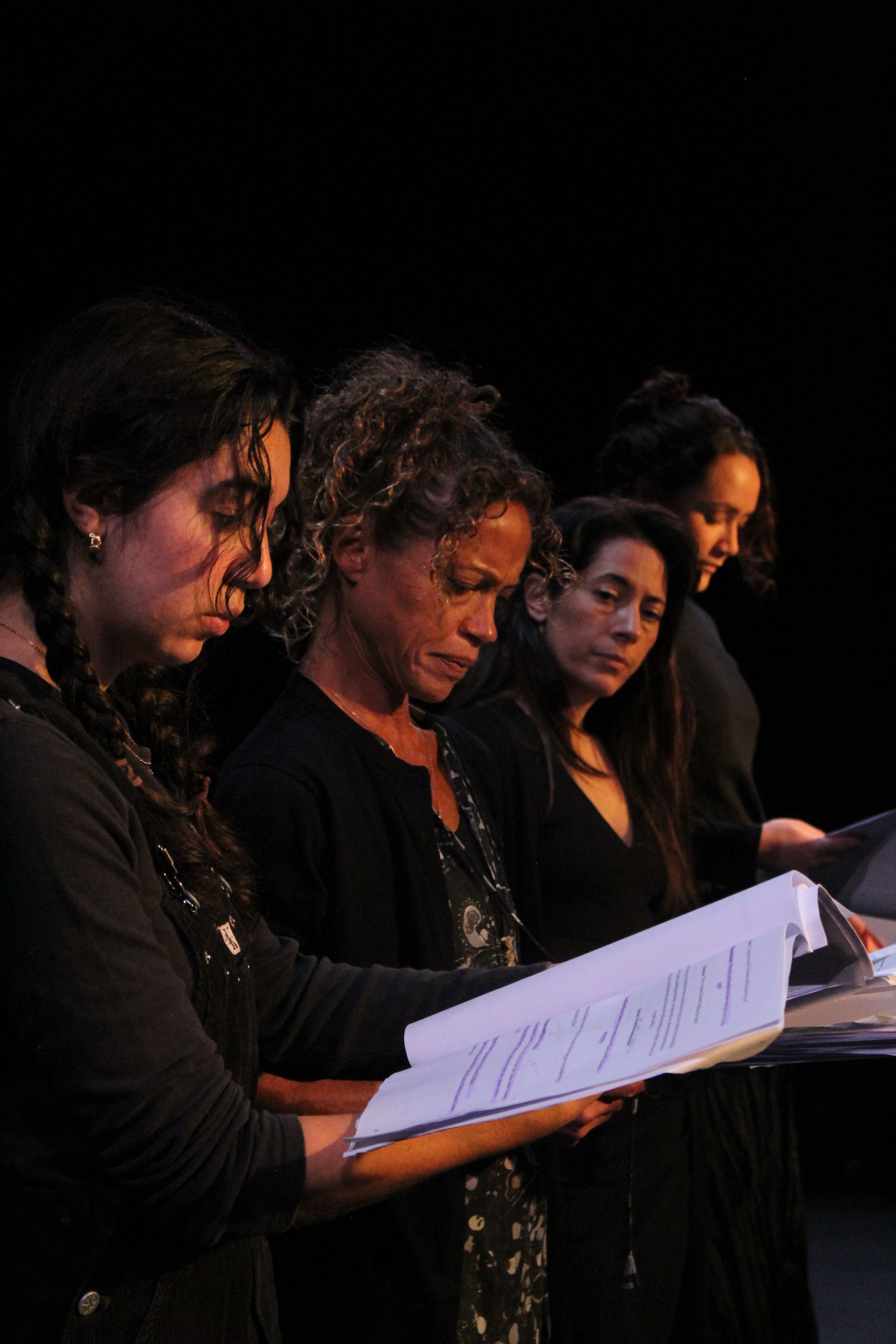
Mariana Ové (Carmen) Cecilia lfonso- Eaton (Martina) Jimena Larraguivel (Mecha) and Cecilia Rodríguez (Rosa) ( photograph by Val Farrow)
The reading of ‘A Migrant Ball of Thread’ written by Sonia Gregorio and translated by Sophie Stevens, was directed by the dynamic Mariana Gándara. Using minimal props and lighting, with some gentle choreography, Gándara managed to give this reading a lot of sensitivity and emotion. For instance, she encouraged the character of Meche (Jimena Larraguivel) to show a heightened sense of anger at her plight, for instance, to add more drama to the reading, as her daughter frets about whether to accept money from her ‘absent and unknown’ father for her ‘Quinceañera, her coming-of-age birthday party (when she is 15). To her, he has never been anything but a voice on the telephone. Clearly a reading is never the same as a full production, but it is equally astonishing to see just how much can be conveyed with the fewest of movements or props.
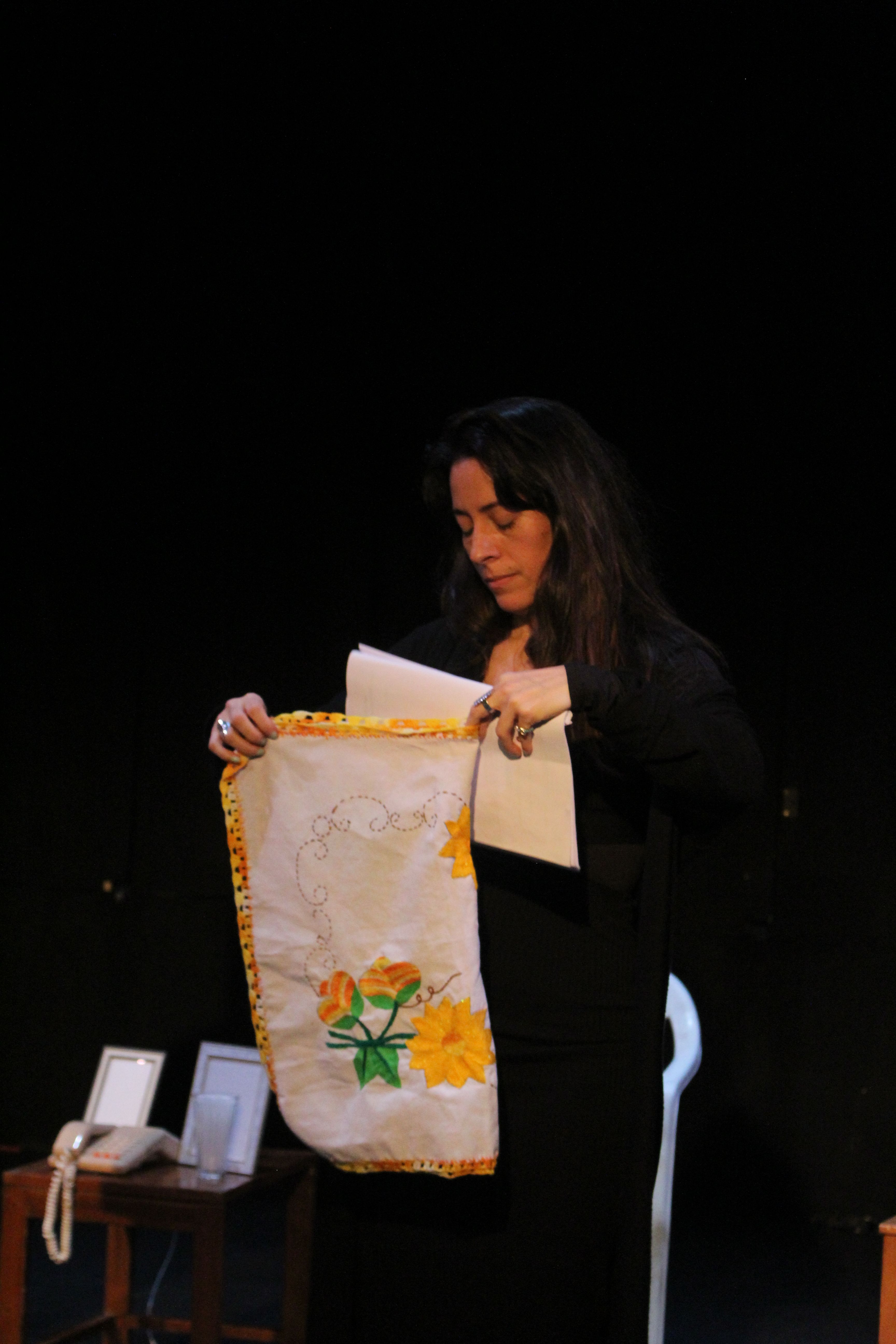
( photograph by Val Farrow)
This tale embodies a Mexican take of the mythological Penelope, who embroidered for 20 years, while she waited for her husband Odysseus to return from his travels. Sonia Gregorio brings this archetypal story down to the realities of village life in Mexico. She creates a patriarchal society that is devoid of men.
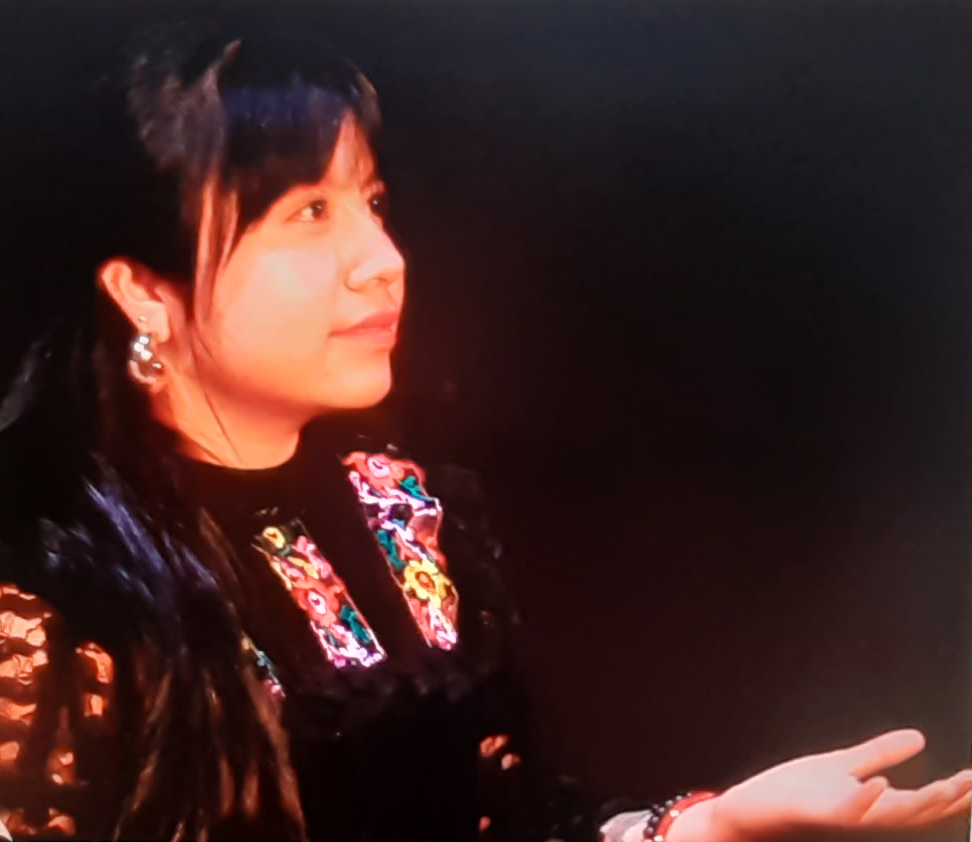
Sonia Gregorio ( photo by Cuauhtémoc Vázquez)
As Gregorio herself commented: -
“This group is formed of women who live in Oaxaca and embroider as they wait for their men to return. On the one hand we have those who leave and then there are those who wait for them. I then realized that I had also spent a lot of my life waiting, like my mother, my aunts, my grandmothers. So, I decided to talk about that experience that was happening to us all, because on the whole in works of art, and theatre, it is always about the journey of those who leave and not about how we, who stay behind, live.
But I want to remove the idea that we are somehow victims of something even if it appears to be so, for, in truth, I do not consider myself a victim, nor do I see my mother in that light, or any of my community. I wanted to regain that strength that we have [as women] and remember that life goes on despite the absences. Also, I want to show how something as small as a needle and thread, can pull so many people[together] as, in this case. Women… Here in the play, we have four, but in the villages, you have many more women who get together, ten, or twenty, who embroider together and something is happening there, they keep each other company while they wait.”
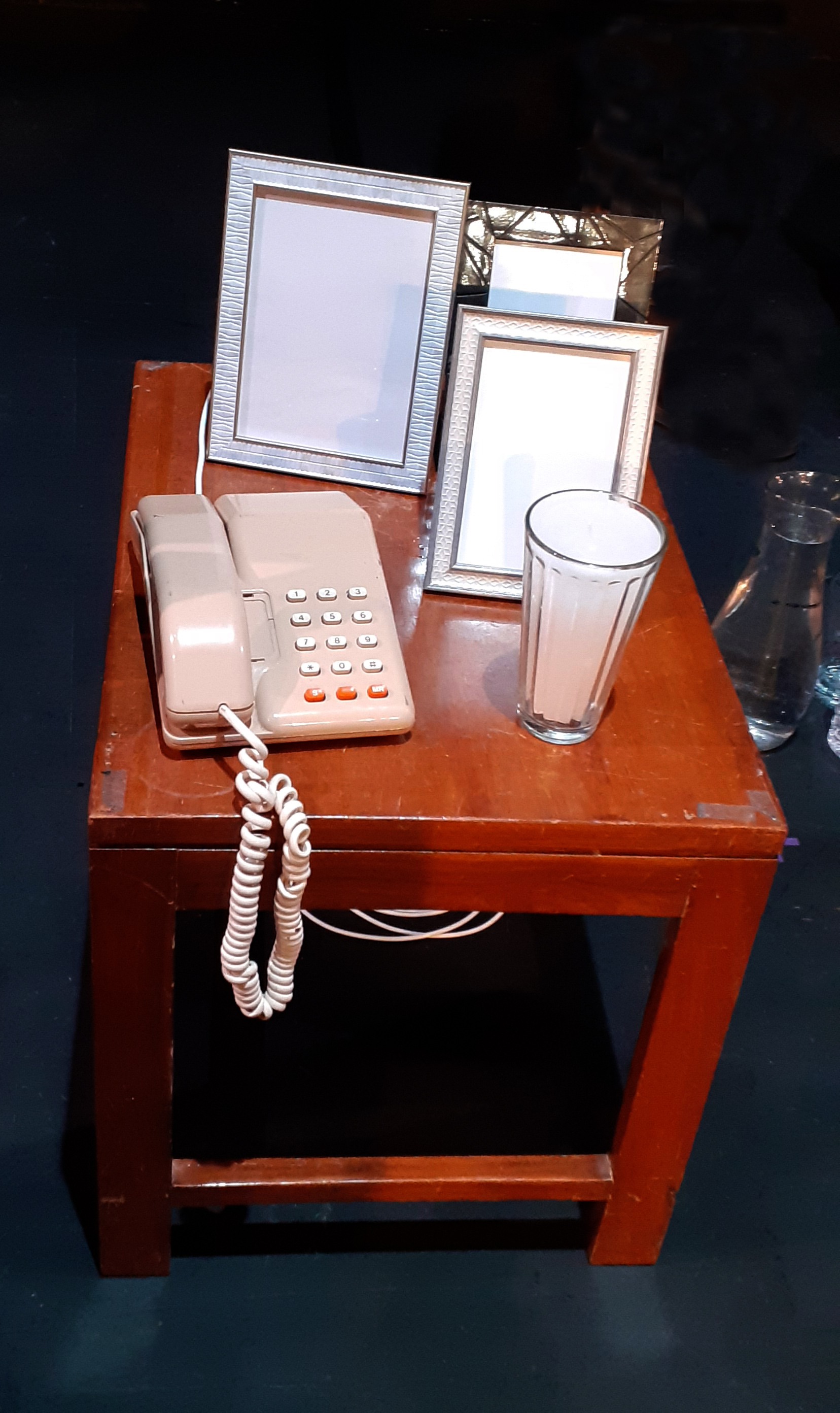
The blank frames of ghosts
Here Gregorio relates the story of a small group of only four women, from a rural community in Oaxaca. Like so many women in similar villages, they have also been left behind by their men who have migrated to the USA in search of a better life, with eloquent promises to return.
While the women wait, they start ‘stitching their kisses’, prayers and hopes, creating embroideries in ever tighter groups of women, like the “Embroidering ants” (Las Hormigas Bordadoras). The mothers embroider for their sons and husbands, while the daughter makes kites, to send messages up into the skies to her absent brother, “Tito we are waiting for you” while another daughter pines for her beloved Ramiro, whose absence becomes total when news arrives that he did not make it “to the other side”. The “other side” that has become an intangible, ephemeral mecca, imagined Shangri-La perhaps, more likely yet another grave in the desert.
As these absences grow longer, even the ever-more sporadic voices on the telephone seem to belong to invisible ghosts, whose images have faded into blank photo frames.
'A Migrant Ball of Thread' feels like a poem in its structure and emotional content. It has political undertones of the social conditions of these women, abandoned but yet trying to be the loyal housewives they always dreamed of being.
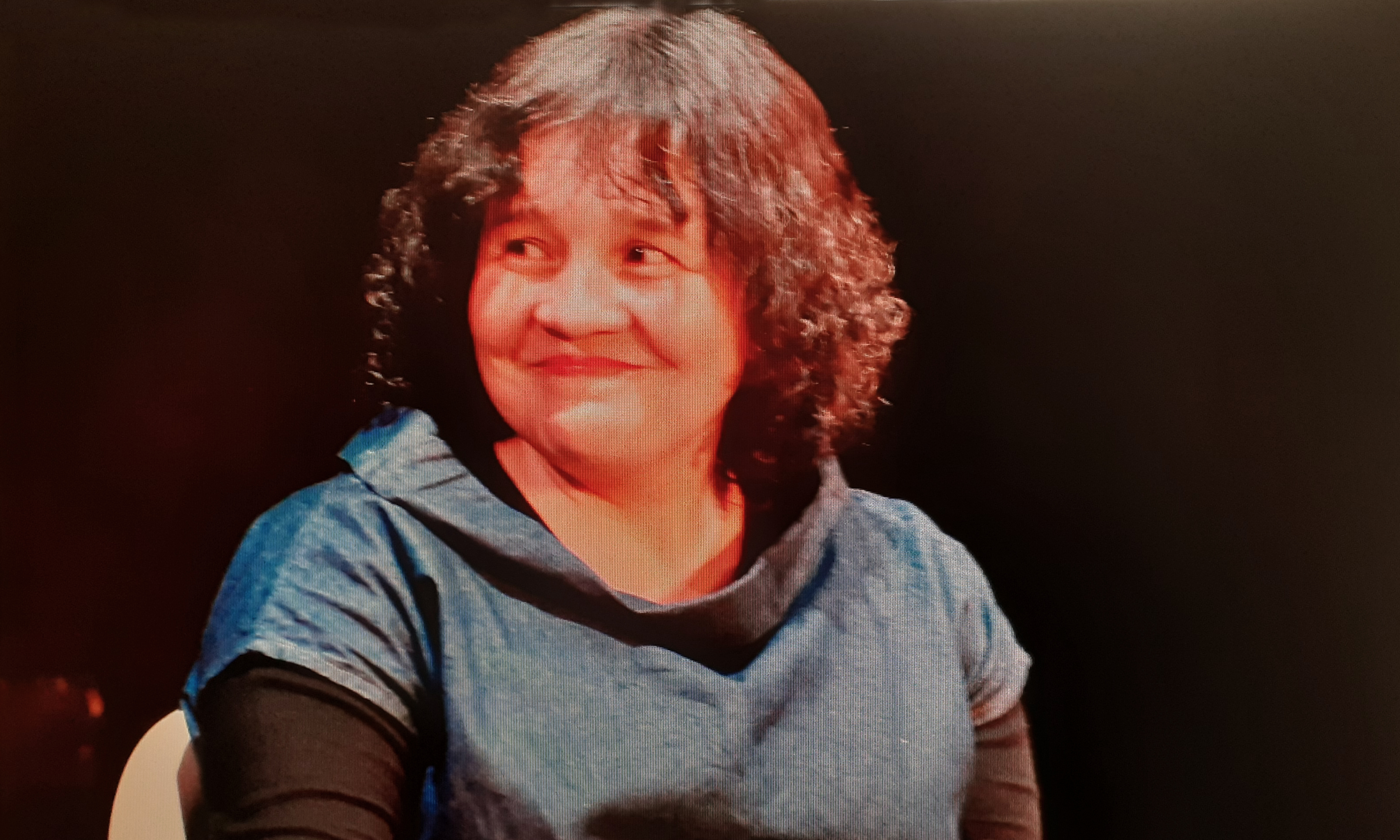
Mariana Gándara ( photo by Cuauhtmoc Vázquez)
Gregorio had almost cast aside her dreams of working in the theatre and going to work for the family business, when she was awarded this opportunity to bring this play to London. She chose this subject matter after being inspired by a spectacular work of Mexican sculptor Alejandro Santiago with his 2501 sculptures ‘The Migrants’.
She was deeply moved by what it represented and began to realize that people talk a great deal about those that leave, their journeys, their adventures, their successes and failures, but hardly ever mention those that remain behind and wait.
Gregorio: -
“He [Alejandro Santiago] would display his sculptures in public areas like markets, in Oaxaca and other cities as well. I then questioned who were these people, these migrants, what were their names, their families? Then, I found a response to that work, with yet another visual work, a women’s group called Las Hormigas Bordadoras (The Embroidery ants).”
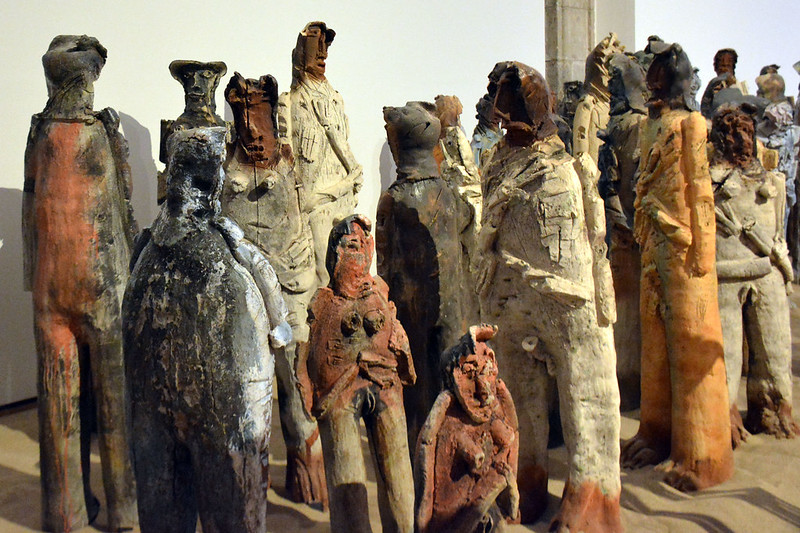
Los Migrantes (2501 sculptures) by Alejandro Santiago
Here, Gregorio has given these women a voice. There is anger in their resilience and in their desire to move on and leave their absent men behind. Doña Carmen no longer wishes to be a wife, maybe she will have the courage to divorce and live her own life. Here Gregorio suggests that these women could have a life of their own, when they stop waiting.
A MIGRANT BALL OF THREAD by SONIA GREGORIO
Quotes are from the Q&A
Q&A with Sonia Gregorio, Sara Pinedo, Mariana Gándara after the performance, chaired by Lucy Morrison.
Cast: Carmen: Mariana Ové /Martina: Cecilia Alfonso-Eaton/ Mecha: Jimena Larraguivel /Rosa: Cecilia Rodríguez /
Crew: Director:Mariana Gándara /Stage Managers :Charlotte Padgham and Lavinia Serban / Interpreter:Ana Torre
Cover photo by Val Farrow


